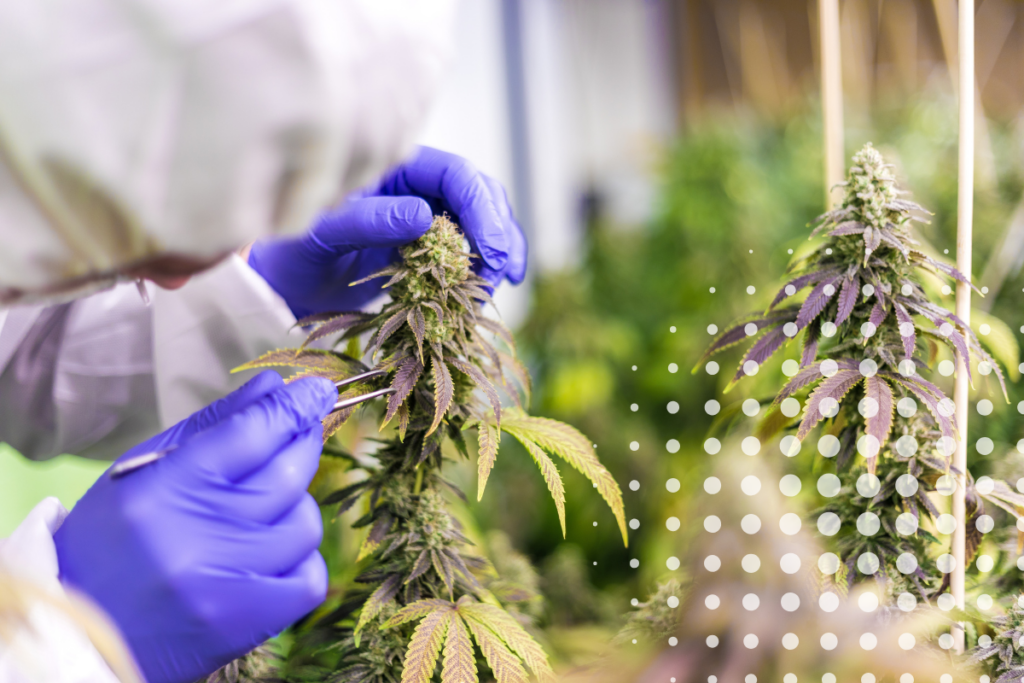Legal Marijuana Containing Dangerous Mold Still Considered “Safe” by States

Marijuana’s humid growing conditions are a paradise for dangerous mold. States where marijuana is legal make growers hire laboratories to check for concentrations of mold and other contaminants that can sicken or kill. But laboratories in many states appear to underreport concentrations of contaminants, a Wall Street Journal analysis found.
A disproportionate share of the samples were reported to contain levels of mold just under legal limits compared with the share of samples containing levels of mold just over legal limits, the analysis of over two million mold-testing results from nine states found.
The improbable pattern suggests tainted samples are being cleared for sale, statistical experts said. The findings reveal a system that isn’t reliably monitoring for dangerous substances in legal marijuana.
“This is something that would not be expected if you took measurements of mold and reported them out in a way that was done without knowledge of the legal threshold,” said Joseph Hogan, a biostatistician at Brown University.
Growers, labs and regulators appear to be exposing people who use legal marijuana to dangerous contaminants, said Tess Eidem, senior research associate in the Environmental Engineering Program at the University of Colorado, Boulder. “There’s no way to know what’s going on when you get a system that doesn’t play by the rules,” she said.
From “Legal Marijuana Contains Dangerous Mold. States Approve It Anyway.” Read the full story here.
This bombshell story in The Wall Street Journal exposed a serious issue plaguing the marijuana industry across state lines. Mold grows very easily on marijuana, and in order to protect the profit margin of growers, it seems some of the safety reports have been altered to ensure that more of the samples are approved for sale.
Different Standards
A large part of the problem lies in the fact that there is no federal regulatory board, leaving it up to each state to determine their own guidelines, which often set different standards for medical and recreational marijuana. Some of this is due to different legislation legalizing medical marijuana and recreational marijuana, with medical marijuana often being legalized earlier with less sophisticated guidelines.
“We really do have a state-by-state-by-state experiment, I guess, in public health,” Michael Kahn, a researcher working with The Accountability Project said. “I just wish that the states would talk to each other more and adjust their regulations based on each other’s data.”
In one shocking example, in the state of Maine, while recreational marijuana is tested for molds and pesticides, the same testing is not required for medical marijuana. This may strike you as backwards until you think about the fact that medical marijuana was legalized in 1999, which was 17 years before recreational marijuana was legalized, so guidelines to protect consumers were not as robust at the time.
Making an informed decision when it comes to marijuana consumption is critical, especially when marijuana is used for medical purposes. Unfortunately, for patients who are immunosuppressed or dealing with other chronic health conditions, the risk of being affected by mycotoxins is much higher due to their immune system not being equipped to handle the toxic load that mycotoxins can add to the body.
Avoiding Mold in Your Marijuana
There are some steps a consumer can take to avoid mold and mycotoxin exposure in their marijuana, but there are risks associated with all consumption. Because mycotoxins are not easily destroyed, there is no method of processing marijuana for consumption that would eliminate all mycotoxin contamination.
Whether the marijuana is smoked, vaped, processed into an oil and consumed, or made into a commercial edible, there is a chance that some or all of the mycotoxins on the original bud may still be present in the final product.
If you purchase buds or leaves, it is important to inspect them for mold. Moldy cannabis often has a grayish-white coating. If you’re not a regular consumer or grower, though, it can be easy to mistake trichomes for mold and vice versa: Trichomes are the sticky, shiny crystals on the leaves and buds that give cannabis its usual aroma. They look like little hairs that almost appear to glitter.
Mold, however, has a gray or white powdery appearance, and does not glitter under the light. Mold also has a distinct odor to it, so your nose will likely notice the mold before your eyes do. Moldy weed usually smells musty or mildewy, as you might expect from mold, or it may smell kind of like hay.
If something seems off about your marijuana, trust your gut and don’t consume it. Life is too short to risk smoking or otherwise consuming moldy weed, especially if you are already dealing with a chronic health condition.
You should also store your marijuana in an airtight container away from light and moisture, which could facilitate mold growth. Adding a desiccant pack, like the silica gel packets you find included in some medications, can help control moisture in your airtight container.
What to Do If You Suspect Exposure
If you consume marijuana, whether for medical or recreational purposes, it is important to keep an eye out for the symptoms of mycotoxin toxicity, commonly referred to as mold illness. These can include some of the more expected respiratory reactions, such as coughing, wheezing, or trouble breathing, but can also include some less expected reactions such as digestive trouble, anxiety, or tinnitus. Familiarizing yourself with the symptoms and keeping vigilant for signs of mycotoxin exposure is a good way to keep yourself safe.

If you suspect you may have been exposed to mycotoxins, getting yourself tested and seeking medical treatment is the best course of action. Safe and simple at-home testing can be performed to test the body for the presence of mycotoxins, requiring nothing more than a urine sample. If you do test positive for mycotoxins, seeing a medical professional to assist you with the detoxification process the next step to take.
While marijuana may be legal in many states, it is still not federally legal in the United States. Comply with all local laws and regulations when choosing whether to consume marijuana.
Resources
Arizona State University. (2023, whethernds fungi contaminants in cannabis pose potential health risks. ASU News. https://news.asu.edu/20231030-study-finds-fungi-contaminants-cannabis-pose-potential-health-risks
Gwinn, K. D., Leung, M. C. K., Stephens, A. B., & Punja, Z. K. (2023, October 18). Fungal and mycotoxin contaminants in cannabis and hemp flowers: implications for consumer health and directions for further research. Frontiers in Microbiology, 14. https://doi.org/10.3389/fmicb.2023.1278189
Karlovsky, P., Suman, M., Berthiller, F., De Meester, J., Eisenbrand, G., Perrin, I., Oswald, I. P., Speijers, G., Chiodini, A., Recker, T., & Dussort, P. (2016). Impact of food processing and detoxification treatments on mycotoxin contamination. Mycotoxin research, 32(4), 179–205. https://doi.org/10.1007/s12550-016-0257-7
Liu, L., Xie, M., & Wei, D. (2022, January 19) Biological Detoxification of Mycotoxins: Current Status and Future Advances. International Journal of Molecular Sciences; 23(3):1064. https://doi.org/10.3390/ijms23031064
Santos-Longhurst, A. (2020, March 31). PSA: Check Your Cannabis for Mold. Healthline. https://www.healthline.com/health/moldy-weed
Seltzer, K. (2023, March 22). Mold in marijuana? Connecticut’s rules are less strict than other states. Connecticut Public Radio. https://www.ctpublic.org/news/investigative/2023-03-22/mold-in-marijuana-connecticuts-rules-are-less-strict-than-other-states
Warren, B. & Wernau, J. (2024, October 17) Legal Marijuana Contains Dangerous Mold. States Approve It Anyway. The Wall Street Journal. https://www.wsj.com/health/healthcare/marijuana-mold-contaminants-safety-a172c230
WGME Staff. (2023, September 21). Nearly half of Maine’s medical cannabis potentially tainted with pesticides and mold, studies find. WGME. https://wgme.com/news/marijuana-in-maine/nearly-half-of-maines-medical-cannabis-potentially-tainted-with-pesticides-and-mold-studies-find-marijuana-industry-maine-office-of-cannabis-policy-recreational-use
